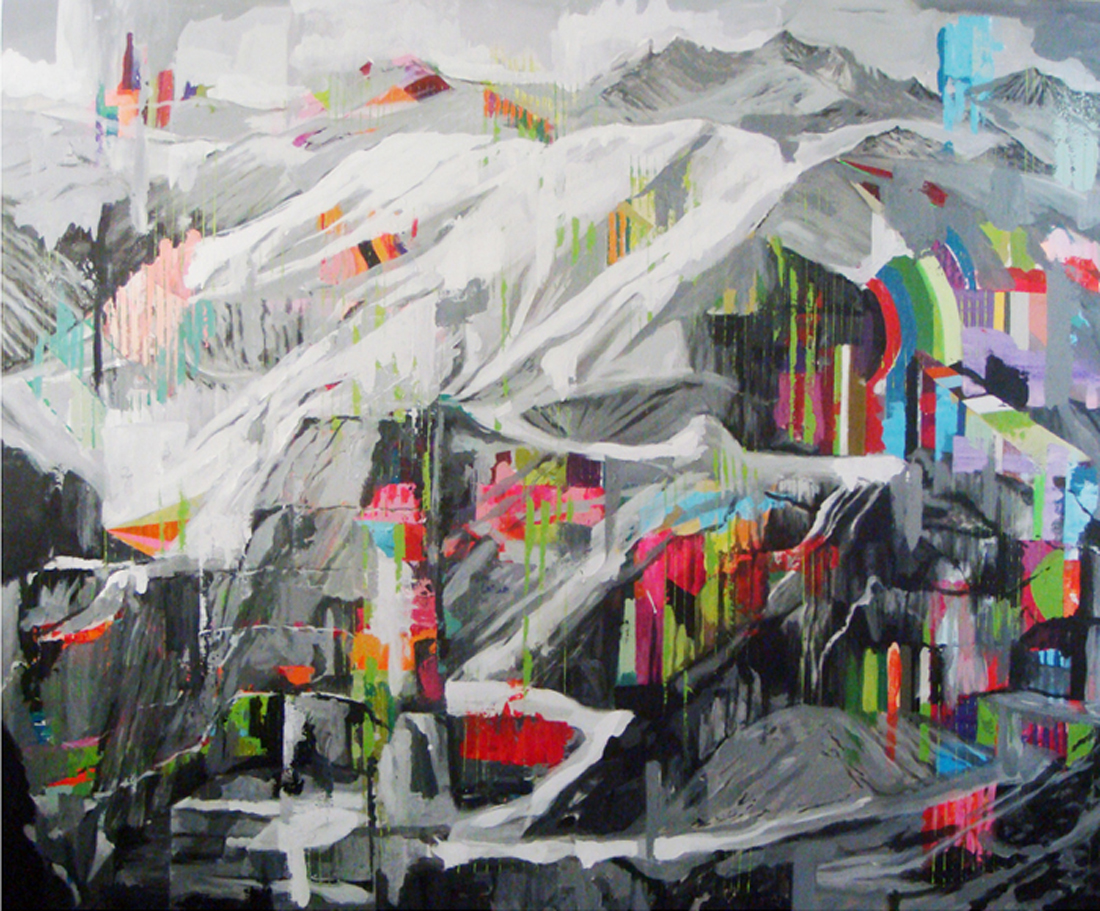Trampland

This series of work from Sofía Echeverri is marked by a pronounced interest in the landscape genre, as well as pictorial investigation. The balance between these two subjects fluctuates in each piece. In some, the landscape seems to be the central motive and is used to achieve a type of commentary about the relationship between natural space and the creations of civilization. In other paintings, the majority of them, the landscape appears in the scene but as if it were in the background; meaning, behind the pictorial exercise that fragments it and makes it partially opaque, distancing it in that way from the terrain of strict figuration and realistic representation. The landscapes in this group of paintings don’t have a timely reference, aren’t elaborated from a specific model. The images are representations assembled from fragments of diverse landscapes, both real and imaginary. This configuration of the image seems to conserve a parallelism with Echeverri’s pictorial investigation where a fragmentation stands out, which turns the landscape into something suggestive, enigmatic and that demands new attention.
Two paintings in this series possess timely references in their expression: Trampland I y Trampland VII. The first represents an abandoned industrial space that has been deprived of its architecture to reveal the landscape that would exist around it. The second shows a group of Maunsell forts, built during World War II by the United Kingdom as a means of maritime protection, within a mountainous landscape. The temporal distance between these two pieces of the series gives away, in an evident way, Echeverri’s growing interest in pictorial investigation. The second work, different from the first, has been fragmented and has acquired layers that make it more complex and suggestive. Beyond this formal difference, these works coincide in the presentation of a tense confrontation, through the landscape genre, between nature and civilization; tension that seems to give rise to a timely commentary. In the first painting, the industrial waste of our civilization becomes a mass with the capability of flooding the totality of the natural scene. In the second piece, the structures of industrial engineering seem to advance in a threatening way through an untainted terrain, where it would seem that mankind has not yet intervened in any way.
